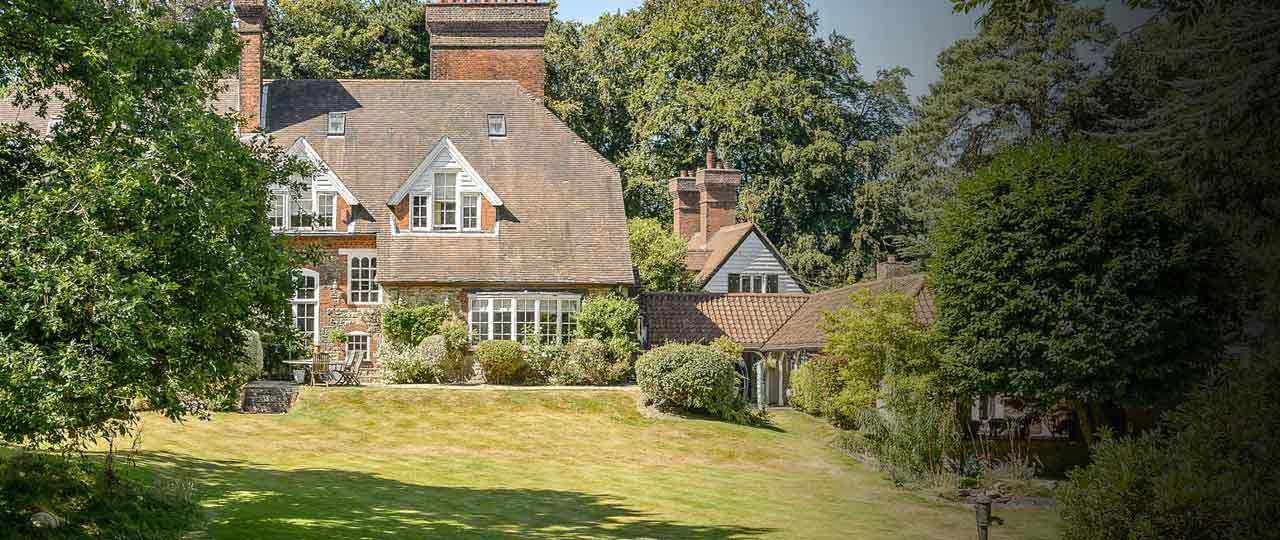
Oliver Custance Baker
Head of National Country House Department


Head of National Country House Department
With a design ethos that embraces locally-sourced goods and long-lasting solid construction, it’s no wonder that Arts & Crafts homes are becoming more fashionable than ever.
While the original Arts & Crafts movement only spanned a period for around 30 years at the end of the 19th Century and the beginning of the 20th, its impact can still be felt – and seen – today.
These homes – designed by the like of William Morris, Sir Edwin Lutyens, John Ruskin and Charles Rennie Mackintosh – combine the charm of a traditional country cottage with the size and proportions of a more generous property. It means modern homebuyers can enjoy size and adaptability with character.
The design and build of these homes was simple but sturdy – using traditional building methods and natural materials.
They aimed to reflect their locality through the use of locally-sourced materials and regional craftsman. While they used building techniques previously seen in the Middle Ages, the design was classed as modern and distinctive. This meant the properties could be adapted to their location, whether that was a small villages or city centre.
Arts & Crafts homes like to show off their construction methods. So expect brickwork, timber and beams to be noticeable features. Oak frames are a big favourite and are usually showcased on the exterior with either brick or render in between the beams.
The home will most likely be a solid looking building, with generous proportions that can be seen in wide porches, pointed window arches and large, low roofs.
Many of the eaves reach down to the first floor, making such properties look like they are only one and a half storeys high. The second floor will have dormer windows to accommodate sleeping areas.
Sometimes, a number of pitched roofs are combined to increase interior floor space, while large chimneys are a design feature seen on most Arts & Crafts homes.
The windows, which are often set back more than in other homes, are often built from small panes of glass in a classic ‘cottage’ style, while bay windows at ground level are sometimes used for the main rooms. You might also spot smaller feature windows that can be round or heart shaped.
Front doors will be solid wood or planked. They will be sturdy looking and wide and are often set on a feature porch, which could include a recessed area or arched opening.
The inside is just as important as the outside, with leading Arts & Crafts figures like William Morris also creating furniture and wallpaper designs that would complement the homes. Stained glass and brick fireplaces, to go with the feature chimneys, were also major features.
As far as period properties go, Arts & Crafts is known as an architecture style that ages well and keeps its condition. Their solid build and relatively young age means that a well-maintained property should be as good now as it was 100 years ago.
But there are a few things we’d recommend being aware of:
- Modern interiors. As mentioned, the interior is almost as important as the exterior and construction. If it’s got the original wallpaper that’s a good sign. But if it’s been stripped of any character and redecorated insensitively, it could affect the value.
- Rotten beams. With beam construction such a key feature, if they’ve not been looked after well and have started to rot, you could have an issue. We’d always suggest speaking to an expert.
- Listed properties. Many of the best examples of Arts & Crafts architecture are Listed, so if you’re planning any work or repairs, you’ll have to do so in the original style.
- Working fireplaces. As it’s one of the main features, make sure the fireplace is in full working condition and has been cleaned regularly.
- Light. Thanks to the small windows and overhanging roofs, the interiors sometimes can be dark – however this may be remedied by thoughtful interior design.
- Layout. Some modern buyers might find the rooms too small - especially the kitchen - so you might need to alter the floorplan